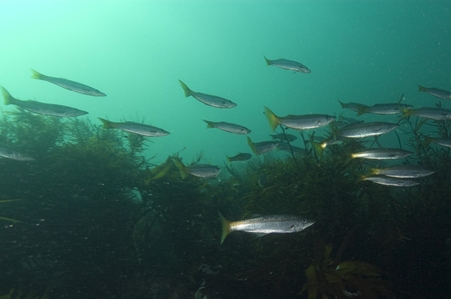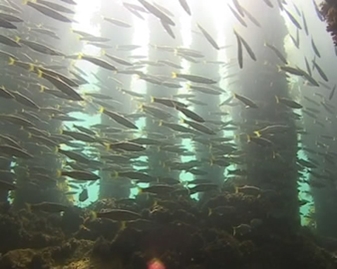General Description
Slender predatory fishes with a narrow pointed head, a large eye and a large mouth with a slightly protruding lower jaw and a single row of small teeth in both jaws; first dorsal fin small and widely-separated from the larger second dorsal fin; anal fin long-based; lateral line almost straight, continuing far onto the tail. Body greyish to yellowish-brown above, silvery below tail yellow. To 60 cm.
Biology
This large predatory species feeds on other fishes and squid. Longfin Pike usually occur in schools, sometimes comprising hundreds of individuals, and are often seen hovering motionless above the bottom. Although unrelated, they superficially resemble barracudas (Family Sphyraenidae).
Habitat
Coastal waters, including bays and estuaries near seagrass beds and on exposed rocky reefs in depths of 1-65 m.
Reefs
Distribution guide
Southern Australia.
Species Group
Depth
Shallow (1-30 m)
Deep ( > 30 m)
Water Column
Max Size
60 cm
Diet
Carnivore
Commercial Species
Yes
Global Dispersal
Native to Australia
Conservation Status
- DSE Advisory List : Not listed
- EPBC Act 1999 : Not listed
- IUCN Red List : Not listed









